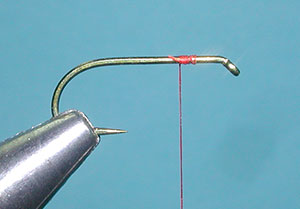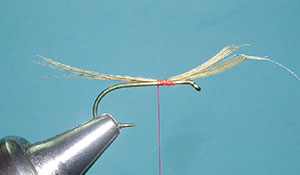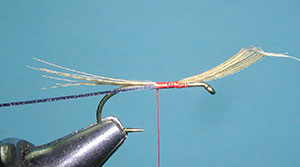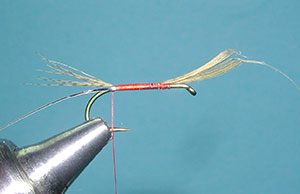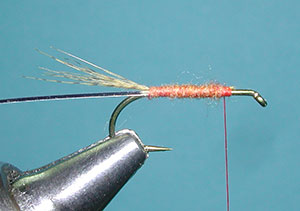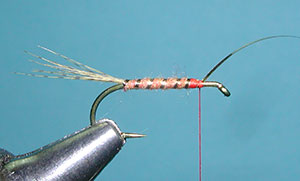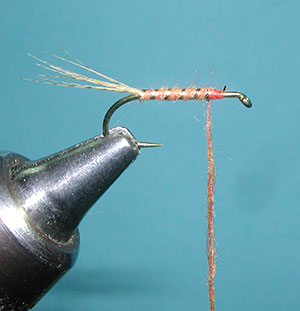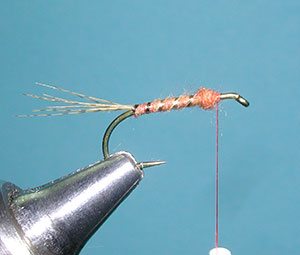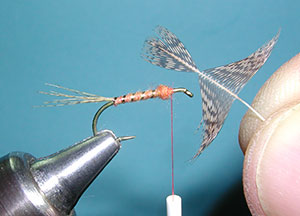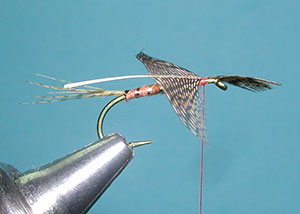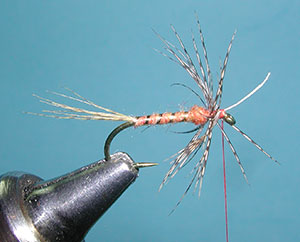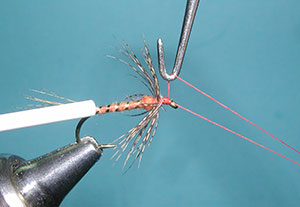Soft Hackle March Brown – something old is something new
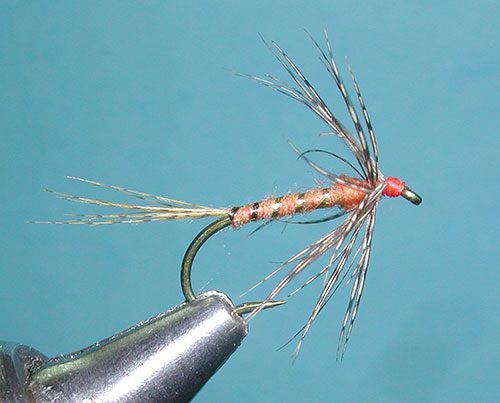
Soft Hackle March Brown
Tying Instructions
| Materials
to Order Material, click the link |
|
|---|---|
| Hook | TMC 9300 #12-16 |
| Thread | Uni-thread 8/0 Orange |
| Body | Superfine Dubbing, March Brown |
| Thorax | Superfine Dubbing, March Brown |
| Tail | Dyed Mallard Flank, Woodduck |
| Ribbing | Narrow Gold Mylar |
| Hackle | Mottled Brown Partridge Hackle |
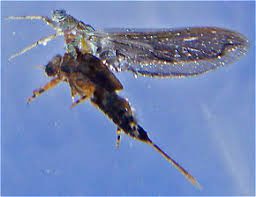
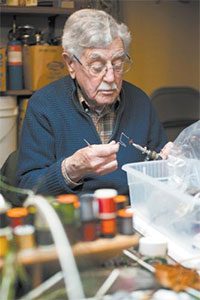
Sylvester Nemes
Soft Hackle March Brown
The March Brown wet fly can be traced back as far as 1496 where Dame Juliana Berners refers to a “donne fly” in the month of March with a “body of dun wool and wings of partridge” in her book, “A Treatyse of Fysshynge wyth an Angle”. The March Brown wet fly was very popular within England and Scotland and soft hackle version was written by T.E. Pritt in 1886 in his popular book, “North Country Flies”.
Sylvester Nemesbrought back interest in the pattern to the United States in 1975 with his book, “Soft Hackled Fly” and, today, it is a favored pattern on many of our western sierra rivers. The Western March Brown is a mayfly,Rhithrogena morrisoni, that prefers clean streams with a good flow and plenty of freestones. It is a genus of mayfly that is predominant in the West Coast states and British Columbia. The Eastern March Brown is a different genus, Maccaffertium, which has a similar look and habit. In Europe, the March Brown is yet another species,Rhithrogena germanica. All three of these species share a common need for clean, well oxygenated water.
Life Cycle of a March Brown
The nymphs are clingers found under the stones and within crevices. They have an incredible ability to fasten themselves to the stones and are available to the trout only when they move about to feed or migrate to slower areas of the river once the hatch is about to take place. Within the Sierra Nevada, our streams usually find the hatch starting in early February after a mild winter. If the winter is cold, the hatch might not begin until March or early April.
During the migration, many of the March Brown nymphs get dislodged from the bottom substrate and are at the mercy of the currents as they are poor swimmers. Once they make it to the surface, they will split their nymphal shuck and escape as duns. However, many of the nymphs will also split the shucks a few inches below the surface and forced to reach the surface as a dun. This is where the Soft Hackle March Brown performs best.
Spider vs Soft Hackle
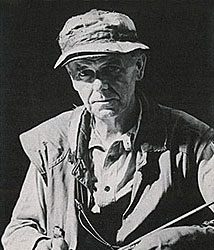
Jim Leisenring
You may see the term “Spider” attached to a soft hackle pattern. This is a term that originated in Yorkshire and has been used for over 200 years. Most of the spider patterns are thin bodies of thread, floss, or dubbed with a sparse hackle of 1-2 wraps. The term “Spider” will often be used interchangeably with “Soft Hackle” in our western patterns and the tail can be absent from both.
Jim Leisenring was impressed with “Spider” patterns through his correspondence with G.E.M. Skues in the early 1900’s. Jim adapted the pattern to have a tapered body and a thorax rather than the straight bodies of the Yorkshire Spiders. Leisenring discussed this style of tying the soft hackle in his 1949 book, “The Art of Tying the Wet Fly”. Sadly, James Leisenring passed away in 1951. This style of tying soft hackle patterns was coined as “Flymphs” by Leisenring’s friend Pete Hidy in 1971 in his book, “The Art of Tying the Wet Fly and fishing the Flymph”.
Basically, it is a transitional pattern between a nymph and the “Spider” form of the soft hackle, also known as a wingless, wet fly. The flymph has a much more fibrous body than a spider that is capable of trapping air bubbles when popped through the water surface. The hackle is usually a hen hackle and wrapped over the thorax area. The trapped bubbles give the pattern a natural imitation of caddis pupae and emerging mayflies.
Silk threads are traditional for tying soft hackles and colors of Primrose, Orange, Red, and Green are often used. Some patterns call for Pearsall’s Gossamer Silk Thread, which has been discontinued but others, such as Ephemera Silk Thread, are still available. If not available, many tyers will use the standard nylon threads.
Presentation
Soft Hackle March Browns are emergers and the traditional way of fishing these patterns is to cast quartering downstream allowing a downstream drift to take place. The fly will cut across the current on the swing and the angler should mend the line to slow that swing. At the end of the swing, left the rod and take a couple steps downstream prior to making another cast. With this method, you can cover most of the water which can be helpful especially if you don’t know where the fish are.
Variations
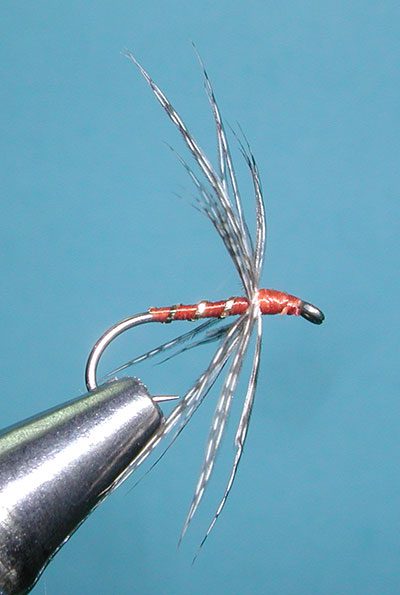
March Brown Spider
| Hook | TMC 3761 #12-16 |
| Thread | Uni-thread 8/0 Rusty Brown |
| Body | Uni-thread 8/0 Rusty Brown |
| Ribbing | Small gold oval tinsel |
| Hackle | Mottled Brown Partridge Hackle |
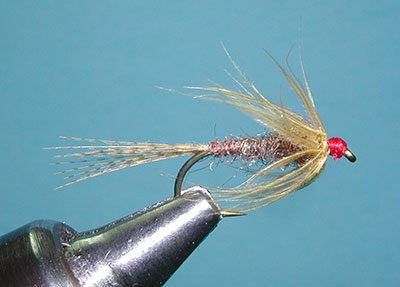
March Brown Soft Hackle
| Hook | TMC 9300 #12-16 |
| Thread | Uni-thread Red 8/0 |
| Weight | Leadfree wire wraps |
| Body | Hare's Ear Mottled Nymph Blend |
| Thorax | Dark Hare's Ear Mottled Nymph Blend |
| Tail | Dyed Mallard Flank, Woodduck |
| Ribbing | Small Copper Wire |
| Hackle | Dyed Mallard Flank Woodduck |
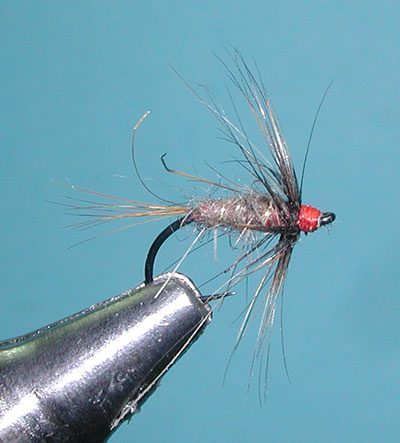
March Brown Flymph
| Hook | TMC 206bl #12-16 |
| Thread | Uni-thread 8/0 Orange |
| Body | Dark Hare's Ear Plus Dubbing |
| Tail | Hen Neck Furnace fibers |
| Ribbing | Small Gold Wire |
| Hackle | Hen Neck Furnace |

